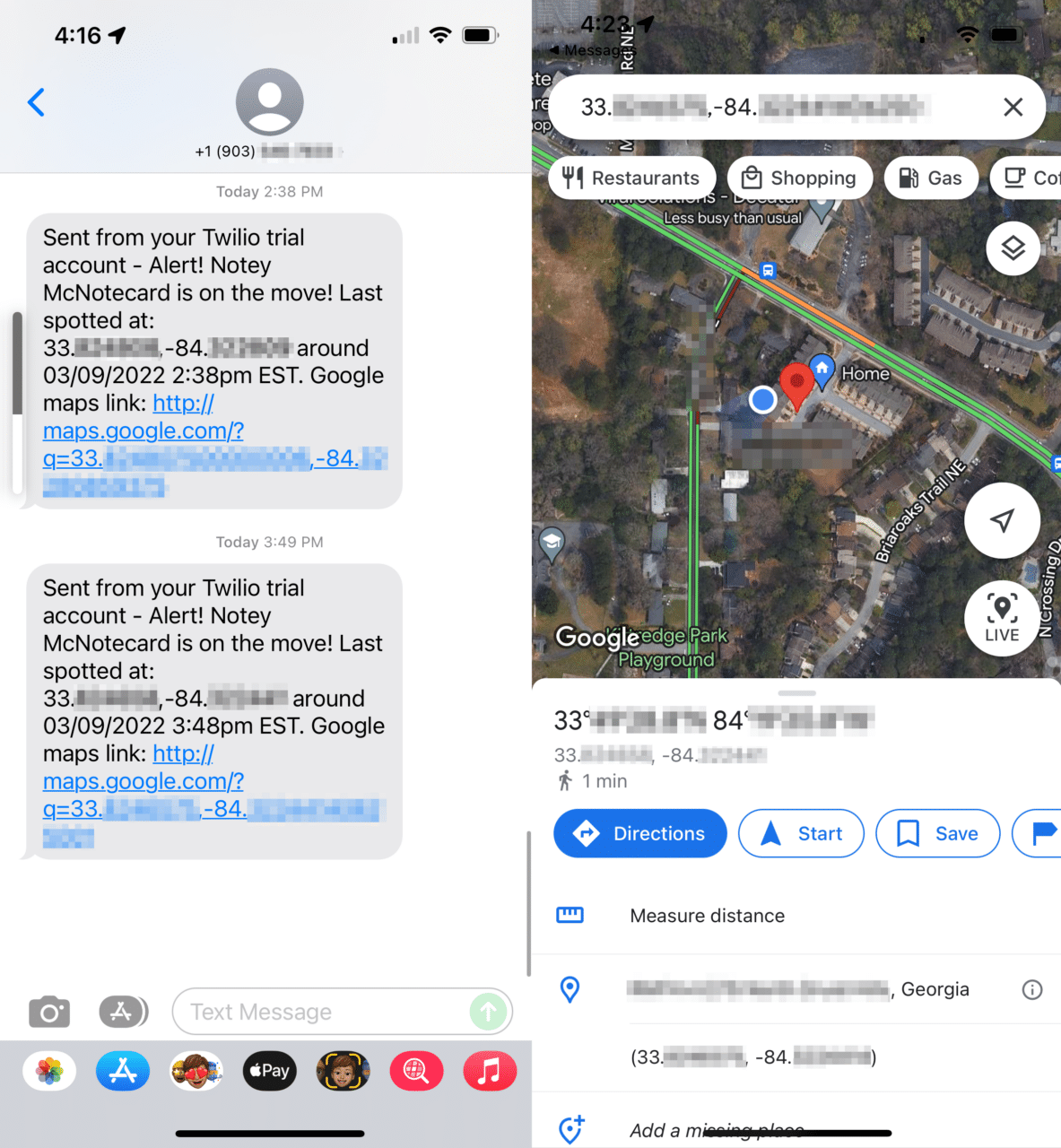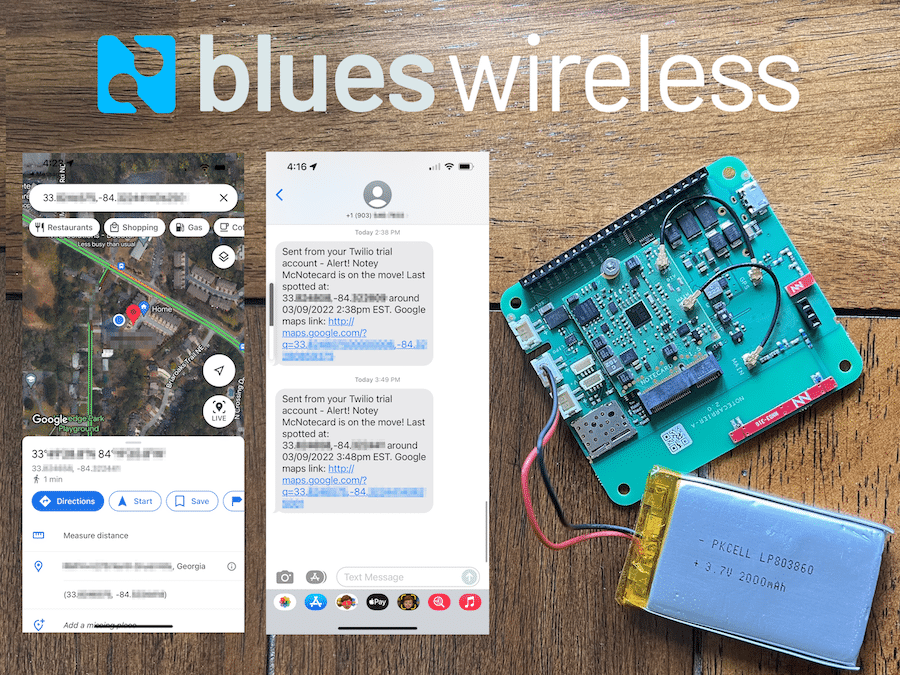The words “asset tracking” typically bring to mind moving dots on a map: cars, trucks, planes, and the like. Things that are supposed to move.
But think about things that shouldn’t move, things that, if they are on the move, means something is amiss: historical statues, expensive environmental monitors, high value equipment in storage, or even (believe it or not) beehives.
In this Hackster project, I built a Blues Wireless Notecard-powered anti-theft tracker that integrates with Twilio to send SMS alerts to a user’s phone when motion is detected, complete with last known location coordinates and a simple Google Maps URL link.
At a high level, here’s how it works:
- The ultra-low-power cellular Notecard (a mere ~8uA when idle) is configured to act as a GPS device, and only begin taking location readings when motion is detected.
- When it’s in motion, it begins taking GPS tagged readings every minute and sending them as JSON data to Notehub – a thin cloud service that securely accepts data from the Notecard.
- Notehub immediately transforms the raw JSON with the help of JSONata into a payload of relevant info for Twilio, and routes this data on.
- Finally, Twilio forwards this data along to the user’s phone and they receive an alert like the screenshot below, with a clickable Google Maps link. Hopefully speeding up recovery of whatever’s gone missing.

To see how I built this, view the full tutorial on Hackster, where I detail exactly how to set up the hardware and software that made this anti-theft and recovery device possible.
